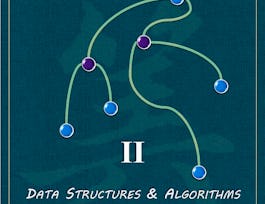This course explores the features of complexity science. Our world is connected by an abundance of complex systems. Across all levels of organizations from physical, biological world to the social world, we may think of the connectivity between individual elements and how they interact and influence each other. For example, how humans transmit pandemics within a group, how cars interact in the traffic system and how networks connect in governmental organizations. Although these systems are diverse and different, they have surprisingly huge features in common.



Introduction to Complexity Science

Instructor: Cheong Siew Ann
Sponsored by Abu Dhabi National Oil Company
5,976 already enrolled
(29 reviews)
Details to know

Add to your LinkedIn profile
1 assignment
See how employees at top companies are mastering in-demand skills


Earn a career certificate
Add this credential to your LinkedIn profile, resume, or CV
Share it on social media and in your performance review

There are 5 modules in this course
An overview of what is covered in the first topic: an introduction to complex systems, explaining how complexity science has evolved, how it has been applied in society, and why it is important to gain a basic understanding of complex systems. Like for all sciences, complexity science is not a spectators' sport. After learning models and methods from the lectures, you will need to try some of these out to develop a practical feel for what they mean and what they can do. This is where the Jupyter Notebook exercises come in. In this course week, we will try out two Jupyter Notebook exercises, on: (1) the Nagel-Schreckenberg model of vehicular traffic, and (2) the Game of Life.
What's included
8 videos5 readings2 ungraded labs1 plugin
In this 2nd topic, we look at how robustness, resilience and sustainability can be defined for complex systems, and some case studies that showcase these attributes.
What's included
6 videos1 reading
In this third topic, we move on to looking at regime shifts and tipping points and their applications in forecasting.
What's included
10 videos1 reading
Next, we look at Agent-Based Modeling - what it is, how it works, why it is used and how to use it. We then try a Jupyter Notebook exercise on Schelling’s Segregation Model.
What's included
3 videos1 reading1 ungraded lab
Lastly, we look at complex networks and their attributes before looking at different network models. We end this topic with a Jupyter Notebook exercise on epidemics on complex networks.
What's included
10 videos1 reading1 assignment1 ungraded lab
Instructor

Why people choose Coursera for their career




Learner reviews
29 reviews
- 5 stars
79.31%
- 4 stars
6.89%
- 3 stars
10.34%
- 2 stars
3.44%
- 1 star
0%
Showing 3 of 29
Reviewed on May 18, 2022
The course provides an easy approach to a laymen to being exposed to the study of complexity science. This broadens and opens up insights to learning.
Reviewed on Nov 30, 2023
I preferred more projects to be added in the program.
Reviewed on Jun 6, 2024
A lot of really interesting detail that you don't get in many other courses around complexity. I particularly liked learning about Soup-of-Groups.
Recommended if you're interested in Physical Science and Engineering

Tsinghua University

Codio

University of Virginia

Arizona State University

Open new doors with Coursera Plus
Unlimited access to 10,000+ world-class courses, hands-on projects, and job-ready certificate programs - all included in your subscription
Advance your career with an online degree
Earn a degree from world-class universities - 100% online
Join over 3,400 global companies that choose Coursera for Business
Upskill your employees to excel in the digital economy


